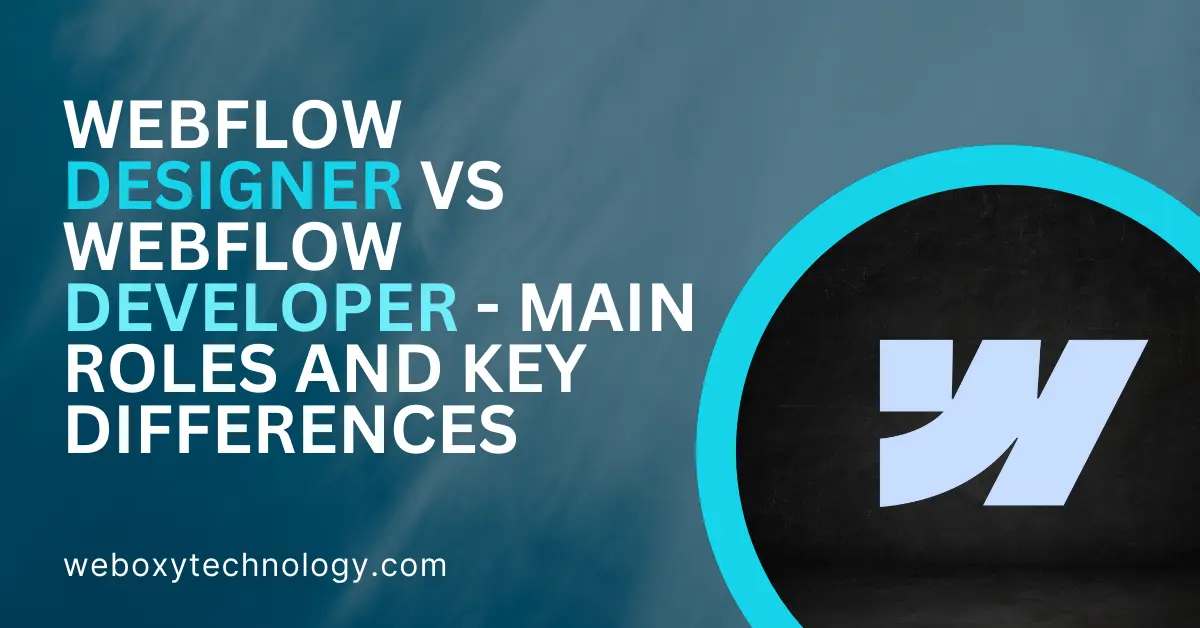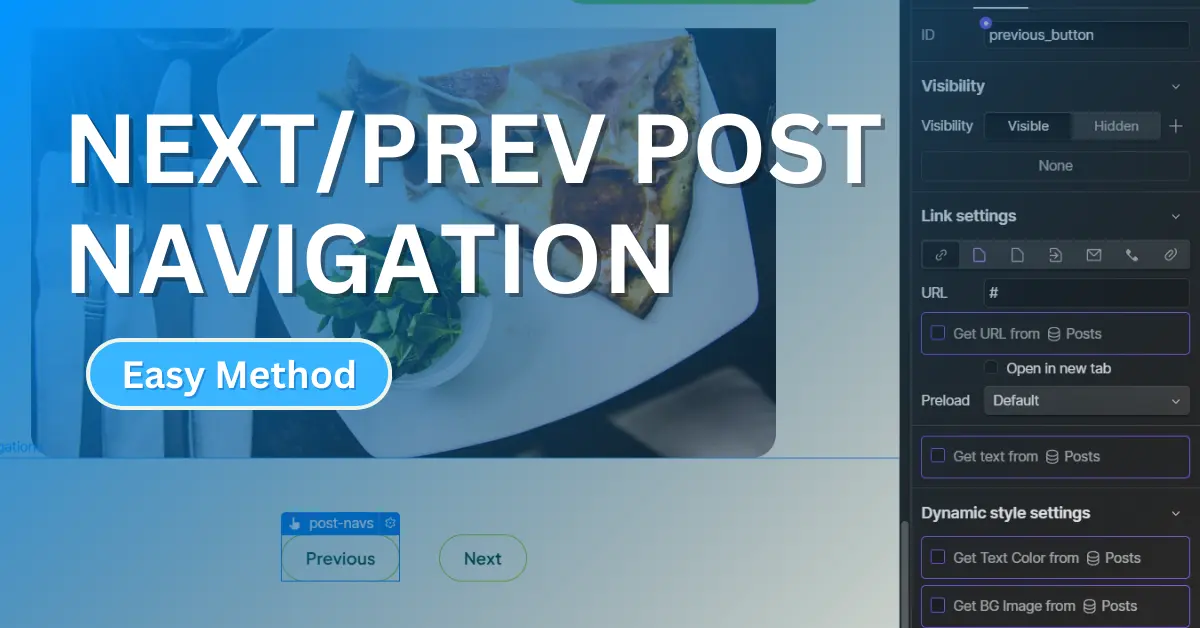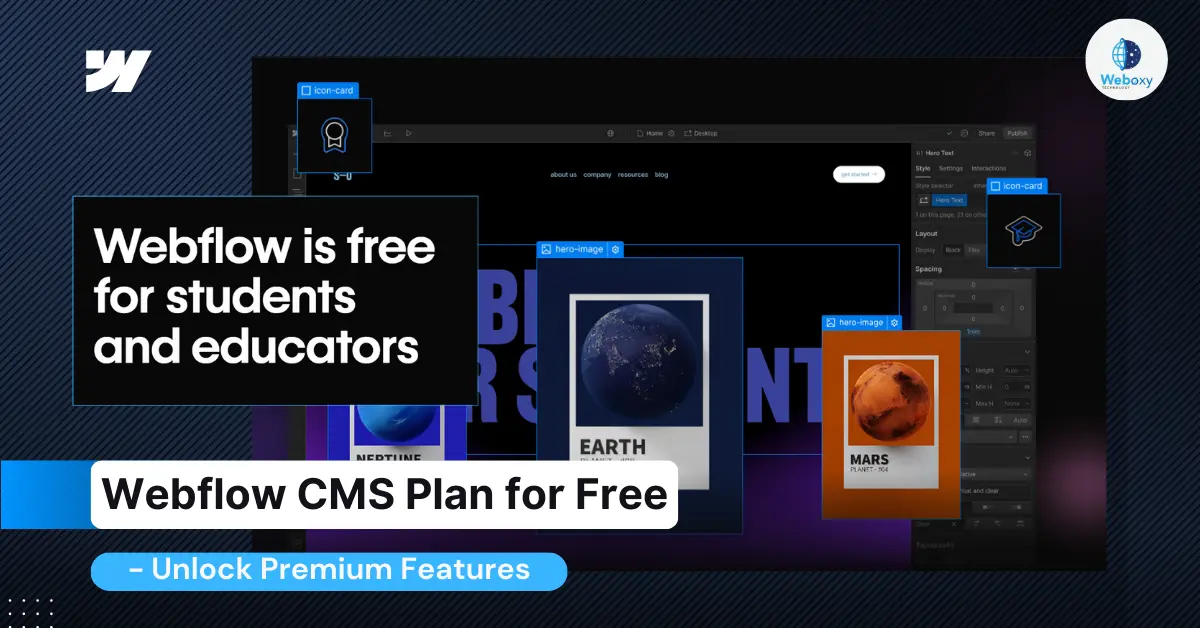Introduction
In the fast-paced world of web design, Webflow has become a powerful tool for creating responsive, professional websites without needing to dive deep into code. Its versatility is one of its most significant strengths, allowing designers to build pixel-perfect layouts, animations, and interactions while developers extend the platform with custom code when needed. From freelancers to large-scale agencies, Webflow is a platform that caters to diverse needs.
While Webflow simplifies many tasks traditionally done through complex coding, building truly effective websites still requires both creative and technical expertise. This is where the distinct roles of a Webflow Designer and a Webflow Developer come into play. Both are crucial, but they serve different functions in the website creation process.
Webflow Designer vs Webflow Developer
| Aspect | Webflow Designer | Webflow Developer |
|---|---|---|
| Design Focus | ✅ | ❌ |
| Development Focus | ❌ | ✅ |
| Frontend Work | ✅ | ✅ |
| CMS | ❌ | ✅ |
| User Experience (UX) | ✅ | ❌ |
| Functionality Optimization | ❌ | ✅ |
| Custom Code Implementation | ❌ | ✅ |
| Scalability | ❌ | ✅ |
| Performance Optimization | ❌ | ✅ |
Building aesthetic websites that work well and attract visitors requires a web designer’s skills to create user-friendly, visually engaging layouts and a web developer’s technical expertise to ensure smooth functionality. Together, they bring a website’s vision to life, ensuring it’s not only visually pleasing but also practical, scalable, and optimized for performance.
Who Is a Webflow Designer?
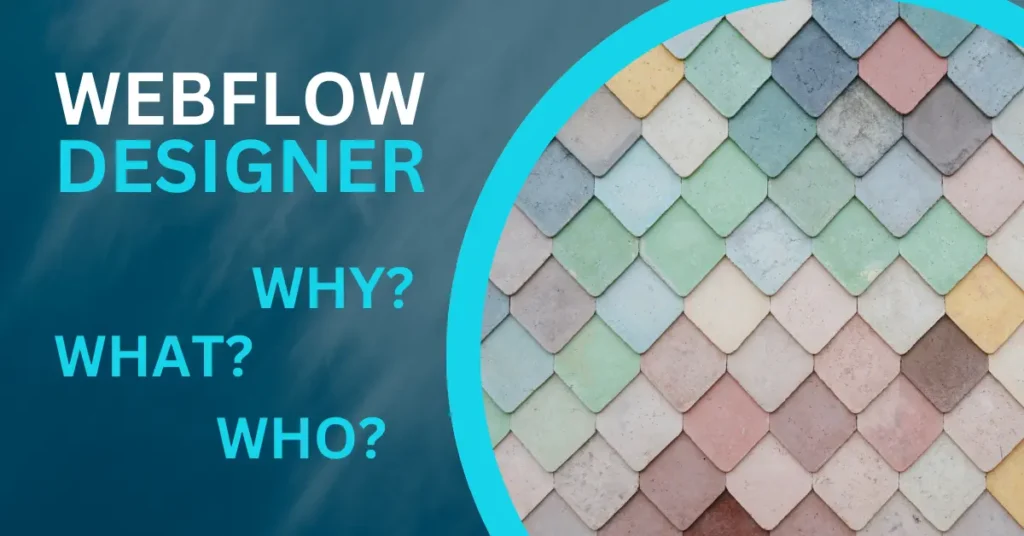
A Webflow designer is the creative force behind a website’s visual identity. They focus on crafting user interfaces (UI) that not only look stunning but also provide an intuitive experience for users. Their primary goal is to create a visually appealing website that is easy to navigate and aligns with a brand’s aesthetic. Webflow designers bring ideas to life through layout, color schemes, typography, and animation, ensuring every element of the website contributes to a cohesive and engaging experience.
Responsibilities of a Webflow Designer
The responsibilities of a Webflow designer revolve around the front-end aspects of website creation. These include:
1. Conceptualizing Designs: A Webflow designer works closely with clients or teams to understand their vision, goals, and branding. They then translate this vision into website layouts and mockups.
2. Creating Visual Elements: Designers are responsible for building custom visuals, from color schemes and typography to more dynamic elements like animations, transitions, and micro-interactions.
3. User Experience (UX) Design: Beyond aesthetics, a Webflow designer ensures the website is easy to use. This involves planning the user flow, optimizing navigation, and ensuring that the design provides a seamless experience across all devices.
4. Prototyping and Wireframing: Before jumping into the final design, Webflow designers often create wireframes or prototypes. This helps visualize the site structure and test usability before development begins.
5. Maintaining Brand Consistency: Whether designing for a business or an individual, it’s crucial that the website aligns with the existing brand guidelines. The designer ensures that colors, fonts, and visual styles remain consistent throughout the site.
Key Skills Needed for a Webflow Designer
To succeed as a Webflow designer, one must possess a combination of creative, technical, and analytical skills:
Creative Vision: A strong sense of design principles, including color theory, typography, and composition, is essential for crafting visually compelling sites.
Attention to Detail: Every pixel counts. Webflow designers need a keen eye for detail to ensure elements like spacing, alignment, and font sizes are perfectly executed.
User Experience (UX) Design: A great designer not only creates visually appealing designs but also understands the importance of functionality. They need to think about the end user and how their design choices impact usability.
Responsive Design: Websites need to look great on all devices—desktops, tablets, and smartphones. A Webflow designer must ensure that their designs are fluid and adapt smoothly across screen sizes.
Collaboration: Webflow designers often work with developers, clients, or other team members. Effective communication and teamwork are crucial in ensuring the final product meets expectations.
Tools and Techniques Used by Webflow Designers
Webflow designers rely on a variety of tools and techniques to turn their creative vision into a functional website:
1. Webflow’s Design Interface: The Webflow designer tool allows professionals to build websites visually. They can manipulate every aspect of a website’s design without writing code, from layouts to animations. It offers flexibility with CSS, HTML, and JavaScript-like interactions.
2. Figma/Adobe XD/Sketch: Many Webflow designers start with prototyping tools like Figma or Adobe XD to wireframe and conceptualize designs before bringing them into Webflow. These tools help map out the website’s structure and test user flows.
3. Animations & Interactions: Webflow’s built-in animation and interaction tools enable designers to create sophisticated effects, such as hover animations, scroll-based movements, and page transitions, all without writing code.
4. Responsive Design Testing: Before finalizing a project, designers use Webflow’s built-in responsive design tools to preview how the website will look on different devices, ensuring it’s optimized for mobile, tablet, and desktop users.
5. Typography and Color Management: Tools like Google Fonts or Adobe Fonts are often used in combination with Webflow to ensure that the typography fits the design. Designers also use color management systems to maintain consistency throughout the site.
In summary, a Webflow designer is not just about making things look good—it’s about balancing creativity with user experience and functionality. They use a combination of visual design skills and tools like Webflow to transform a brand’s vision into an immersive digital experience.
Who Is a Webflow Developer?
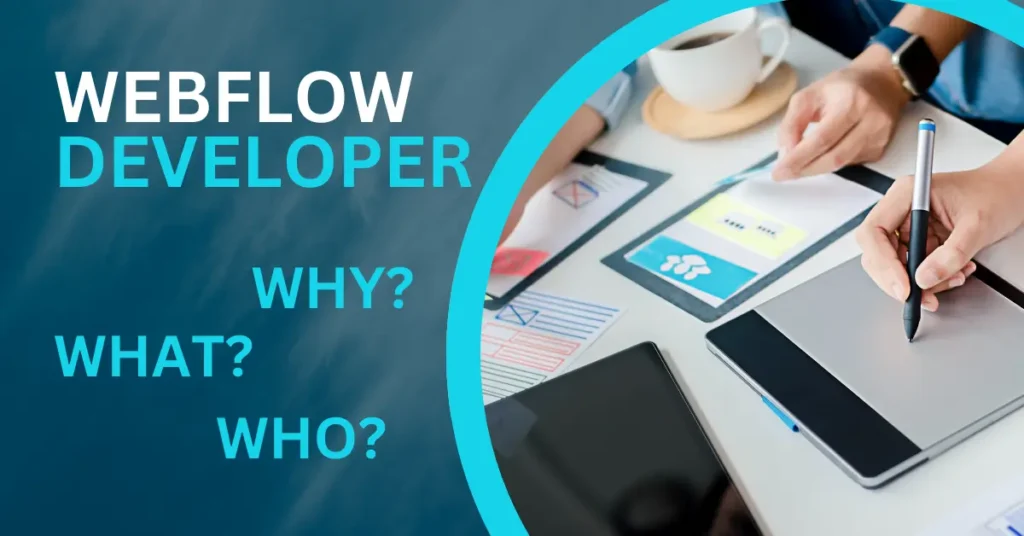
A Webflow developer is the technical expert who brings a website’s design to life through code and advanced functionality. While Webflow simplifies many aspects of web design, developers add depth and interactivity that goes beyond what can be achieved with visual tools alone.
They focus on ensuring that a website not only looks great but also performs flawlessly, providing users with a smooth and engaging experience.
Responsibilities of a Webflow Developer
The responsibilities of a Webflow developer include a variety of technical tasks that are essential for the effective operation of a website. These include:
1. Custom Code Implementation: Developers can write custom JavaScript, CSS, and HTML code to extend Webflow’s capabilities, adding unique features that may not be available through the platform’s built-in tools.
2. Integrating Third-Party Services: Many websites rely on third-party services for features like payment processing, email marketing, and analytics. A Webflow developer integrates these services seamlessly, ensuring that they function properly within the website.
3. Optimizing Performance: A critical part of a developer’s job is to optimize website performance. This includes minimizing load times, improving responsiveness, and ensuring that the site runs smoothly across all devices.
4. SEO Best Practices: Webflow developers implement SEO best practices to enhance a website’s visibility in search engines. This includes optimizing meta tags, setting up redirects, and ensuring clean, semantic code.
5. Troubleshooting and Debugging: When issues arise, it’s the developer’s responsibility to diagnose and resolve problems. This can involve everything from fixing broken links to debugging complex interactions.
Key Skills Needed for a Webflow Developer
To be effective in their role, Webflow developers must possess a unique set of skills that combine creativity with technical proficiency:
1. Proficiency in HTML, CSS, and JavaScript: A strong grasp of these foundational web technologies is essential for customizing websites and implementing advanced features.
2. Understanding of Webflow’s Limitations: Developers must know the constraints of Webflow and how to work within them while finding solutions to extend the platform’s capabilities.
3. Problem-Solving Skills: Web development often involves troubleshooting and finding creative solutions to complex problems. A successful developer should be able to think critically and adapt quickly.
4. E-Commerce Handlings: Webflow developers working on eCommerce sites need to know how online stores operate. This includes managing product listings, setting up shopping carts, integrating payment systems, and making sure transactions go smoothly. They also work to make the checkout process simple and user-friendly.
5. Backend Database Management: For more complex sites, Webflow developers may handle or connect with databases to store customer information, track orders, and manage inventory. They ensure the data is secure, easy to access, and organized in a way that helps the website grow and perform well.
6. Familiarity with APIs and Integrations: Understanding how to work with APIs is crucial for integrating third-party services. Developers need to know how to connect Webflow with other platforms seamlessly.
Tools and Techniques Used by Webflow Developers
Webflow developers utilize a range of tools and techniques to enhance their workflow and deliver high-quality websites:
1. Webflow’s Designer Interface: While primarily a designer’s tool, developers also use the Webflow Designer to lay the foundation of a website, creating elements that can later be customized with code.
2. Code Editors (e.g., Visual Studio Code): For custom coding, developers often rely on code editors that allow for writing and testing scripts, ensuring they function correctly before implementation.
3. CMS (Content Management System): Webflow developers use the platform’s CMS to manage dynamic content like blog posts, product catalogs, and customer data. The CMS allows developers to structure and update content easily, ensuring that it’s scalable, organized, and can be edited without touching code.
4. APIs and Webflow Apps: Familiarity with various APIs and Webflow apps allows developers to enhance functionality, integrating features like chatbots, payment gateways, and social media feeds into the website.
To sum up, a Webflow developer is vital in converting a designer’s concept into a fully operational website.By combining technical skills with a deep understanding of the Webflow platform, they ensure that websites not only look great but also perform reliably and efficiently, providing users with an exceptional experience.
Choosing the Right Path – Designer or Developer?
When deciding between the path of a Webflow designer or a Webflow developer, it’s important to consider your strengths, goals and interests. If you enjoy visual creativity and crafting user-friendly experiences, the designer role may be your calling. On the other hand, if you’re passionate about functionality, problem-solving, and coding, becoming a developer could be the right fit.
Conclusion
Both roles are crucial in building successful Webflow projects. While designers focus on creating visually appealing, intuitive sites, developers ensure those sites are technically sound and perform smoothly. A perfect balance between design and development is what brings a website to life, making it not only beautiful but also functional and reliable.
